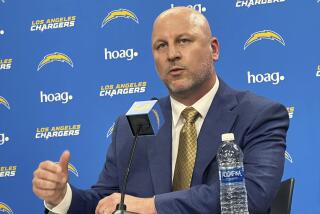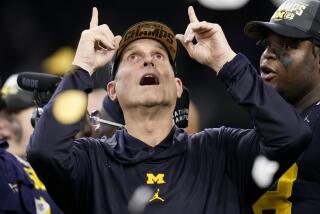Of college football coaches, CEOs, and excessive pay at the top
Readers of this blog know that we have an indirect, and fairly mild, rooting interest in University of Michigan Wolverines football.
Lately that’s been a disappointing experience in one respect (2-3 so far this year, including a ridiculous 30-14 blowout by Minnesota last Saturday). But it’s been fascinating in another respect, which involves looking back at the performance of head coach Brady Hoke, and matching it to his stupendous salary. After an 11-2 record in his first season in 2011, Hoke as racked up a 17-14 record. That’s no good.
Hoke’s reign may have “final” written all over it following Saturday’s game, which featured not only a loss to a traditional Michigan floormat, but the spectacle of Hoke sending a plainly woozy sophomore quarterback Shane Morris back into the game after he suffered a disabling fourth-quarter hit. Morris was later found to have suffered a concussion; Hoke said he had been unaware of the injury.
This performance underscores how Hoke’s pay was established without any regard to market forces or his previous record. In that respect, it resembles the process of setting pay for corporate CEOs, which also has nothing to do with market forces or previous records. The result in both arenas is obscene pay for mediocre performance.
In 2011, Michigan’s athletic director, Dave Brandon--a former CEO of Domino’s Pizza--explained to the Detroit News the reason for paying Hoke $16.5 million over six years, not including bonuses: “If you’re going to be the Michigan coach, you should be paid in the top third of the conference,” Brandon told The News. “Brady has a big job, and Brady feels like he’s being well compensated for the big job he’s now responsible for. I have a happy employee, and my employee has a happy employer.” This yielded a salary that placed Hoke fourth among the Big 10 coaches.
Jonathan Chait, then of The New Republic, interpreted Brandon’s words as follows: “It’s a perfect example of the benchmarking method: First you calculate what your peers are paying, and then you pay a little more.” As he pointed out, Hoke was so desperate for the job that the former San Diego State coach didn’t even ask how much he would be paid: “We would have walked here from San Diego,” Hoke said.
He wasn’t a highly-sought commodity, and his salary at San Diego had been $700,000. Brandon’s crackerjack negotiating skills got Hoke for a bargain-basement price of just shy of $3 million a year. Mary Sue Coleman, then the university president, pulled down a bit more than $600,000, as the highest-paid president in the university’s history.
Chait: “I would really like to see an economics textbook try to explain the negotiating dynamic here.” (Chait, now at New York Magazine, just published a blistering critique of last weekend’s events and the performance of Hoke and Brandon. Not pretty.)
The only explanation may be that Michigan saw Brady Hoke’s salary as a totem of its own--a hallmark of its own prestige. How could Michigan possibly hold its head high in the Big 10 with a head coach earning, say, a mere $1 million, or even less? Pay for performance? Not in the cards.
The situation underscores yet again the folly of big-name college sports (we’re talking chiefly football and basketball). The highest-paid public officials in 40 states are the football or basketball coaches at the state university, according to a 2013 analysis by Fast Company. (In Michigan, the top spot was held by Tom Izzo, the Michigan State basketball coach.) That’s a testament to the sports programs’ role as businesses, not academic enterprises.
This level of pay, combined with the fact that these coaches notch their success or failure with the assistance of unpaid labor on the gridiron, is another illustration of the basic incompatibility of these programs with academia, and the pure illogic of NCAA rulemaking.
As Scott Lemieux of the lawyersgunsandmoney blog puts it, under NCAA regulations, “if a booster has taken a...Michigan player out for a Quarter Pounder, this would be the greatest scandal in known human history.” Outsized compensation for the guys sending crippled young players back on the field, not so much.
Keep up to date with The Economy Hub by following @hiltzikm.







